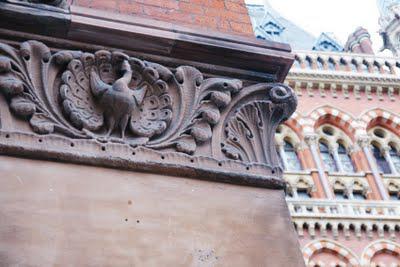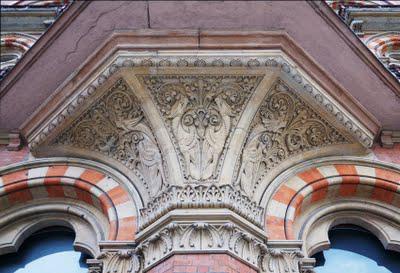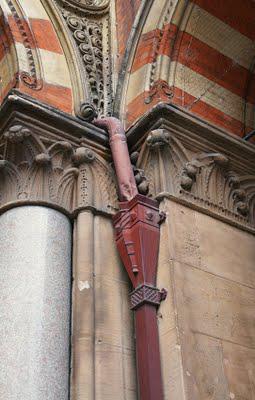Happily, the story didn't end there. External restoration in the 1990s was followed by internal works which returned St Pancras Chambers to its original role as a fine hotel, as well as converting part of the building into apartments. Reborn, this London landmark is enjoying glory days once more.
There's something about St Pancras which inspires real devotion. It's fitting, then, that the hotel has its own historian - whose involvement in the building began in its darker days. Royden Stock's guided tours are absolutely fascinating: he has a real depth of knowledge, as well as having witnessed the restoration process at first hand. However, before the tour I had time to take a few pictures of the exterior. In part two, we'll move inside.
 The hotel was commissioned by the Midland Railway, who wanted it to overshadow their rivals next door at King's Cross. George Gilbert Scott, selected as architect, certainly did that - and yet the building we see is the economy version, which cost a mere £438,000. His original plans included another floor, but as the hotel building was exceeding its already huge budget he had to forego that on grounds of cost.
The hotel was commissioned by the Midland Railway, who wanted it to overshadow their rivals next door at King's Cross. George Gilbert Scott, selected as architect, certainly did that - and yet the building we see is the economy version, which cost a mere £438,000. His original plans included another floor, but as the hotel building was exceeding its already huge budget he had to forego that on grounds of cost. As well as being the finest railway terminus in London, the hotel was also to showcase Midlands materials, not least their red brick. Although a few niches have no statues, again in the interests of saving money, most visitors won't notice that amongst the wealth of other detail here. Even the drainpipes are suitably gothic.
As well as being the finest railway terminus in London, the hotel was also to showcase Midlands materials, not least their red brick. Although a few niches have no statues, again in the interests of saving money, most visitors won't notice that amongst the wealth of other detail here. Even the drainpipes are suitably gothic. 
Further reading: Lee Jackson of Victorian London has also visited. The hotel has a PDF of its history here.

